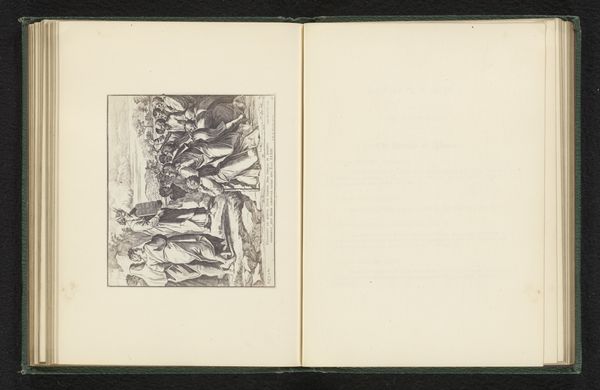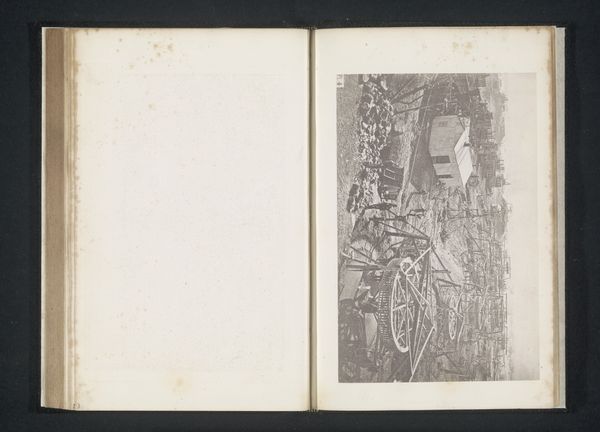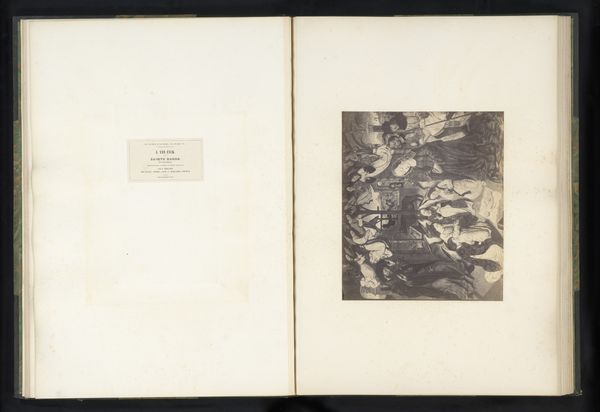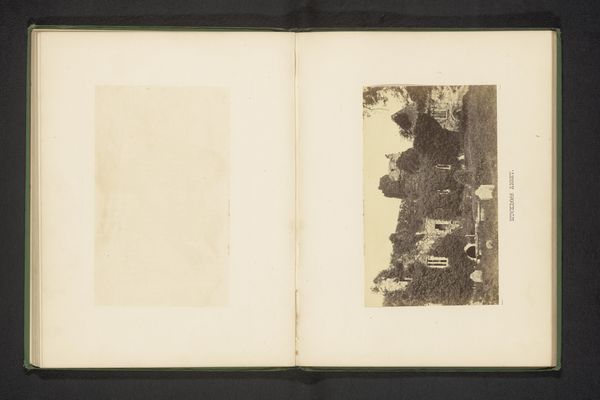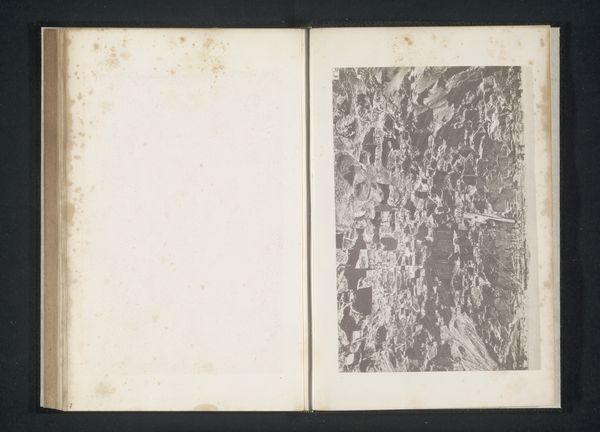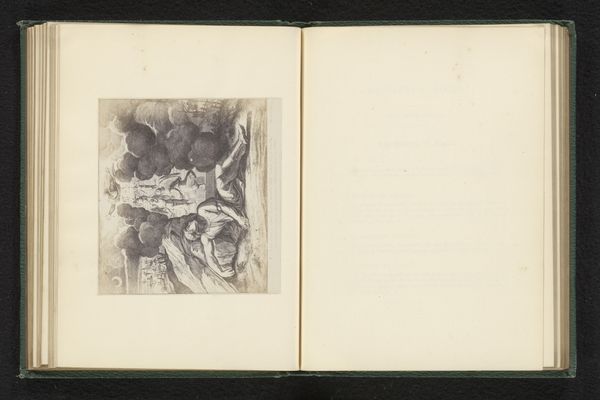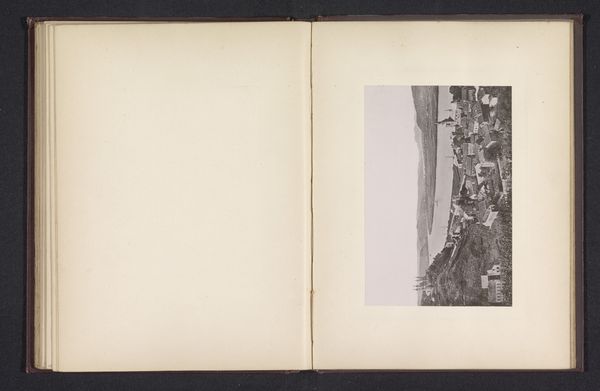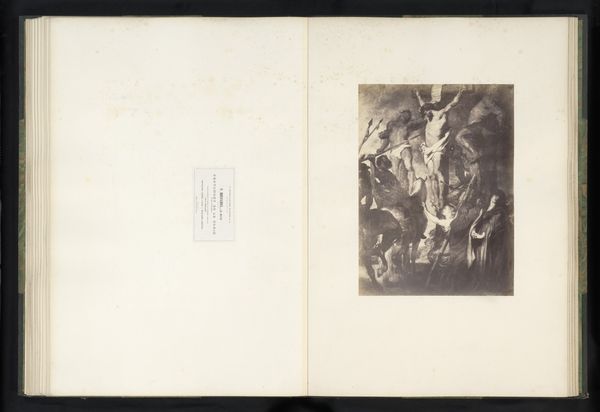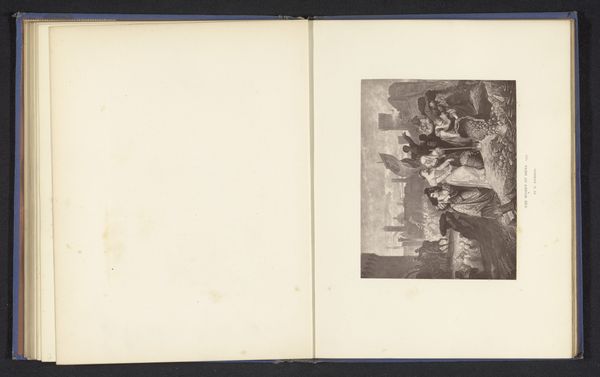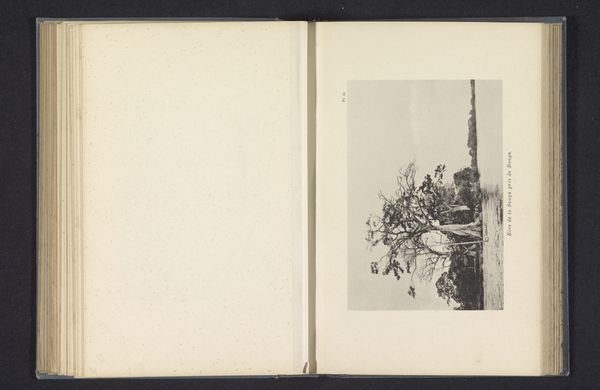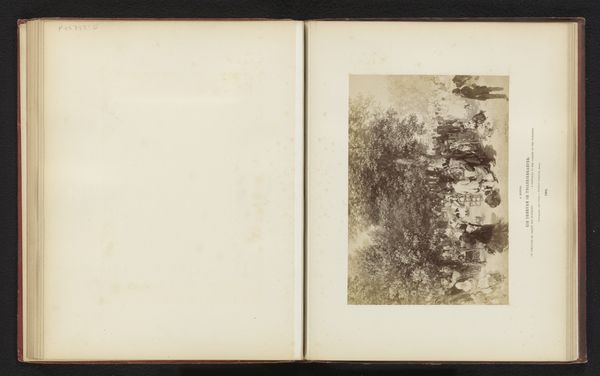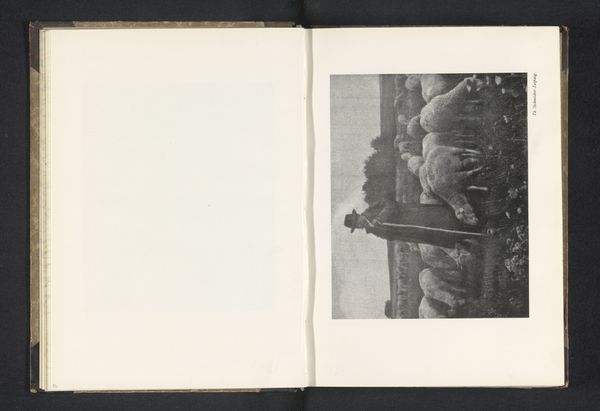
Mannen aan het werk in een diamantmijn in Zuid-Afrika, vermoedelijk bij Kimberley before 1880
0:00
0:00
print, photography, gelatin-silver-print
# print
#
landscape
#
photography
#
gelatin-silver-print
#
realism
Dimensions: height 131 mm, width 192 mm
Copyright: Rijks Museum: Open Domain
Curator: Here we have an early photograph, a gelatin silver print from before 1880, attributed to the Gray Brothers. Its title translates to "Men at Work in a Diamond Mine in South Africa, Presumably near Kimberley." Editor: Immediately, the visual weight of the composition strikes me. There’s a definite starkness, a kind of high-contrast study in geometric forms dominating the workers themselves. Curator: It's crucial to consider the historical and social dynamics at play here. We are looking at the legacy of colonialism and forced labor, the visual vocabulary of resource extraction in South Africa. These workers are, in a very real sense, building the wealth and power of colonial institutions, but the image keeps them as merely figures on the landscape. Editor: Agreed. If we focus on purely formal qualities for a moment, note how the tonal range and light create visual divisions within the pit. The repetitive patterns in the earthworks almost dehumanize the figures who toil at the bottom. It creates an abstract almost constructivist visual arrangement. Curator: Indeed, the photo turns human bodies into component parts within the industrialized process, even prior to what one could properly call industry. The subjects, undoubtedly people of color, appear interchangeable, diminished as individuals—a visual echo of their actual social and economic standing in the Kimberley mines. The power dynamic is embedded within the photographic representation. Editor: What seems missing, perhaps understandably given the photographic methods of the period, is the sense of depth or volume, leading one to think of a landscape reduced and flattened. It removes that sense of spatial immersion or human experience. It reduces a complex process to a stark, somewhat minimalist record. Curator: This minimalist reduction allows viewers, even today, to ignore the history and lived realities within that space. We must, however, actively confront this aspect in this historical context, interrogating the power dynamics inherent in this representation of labor. Editor: A stark and revealing, if unsettling, work on multiple visual registers. Curator: Precisely, a testament to the complexities that images can carry.
Comments
No comments
Be the first to comment and join the conversation on the ultimate creative platform.
